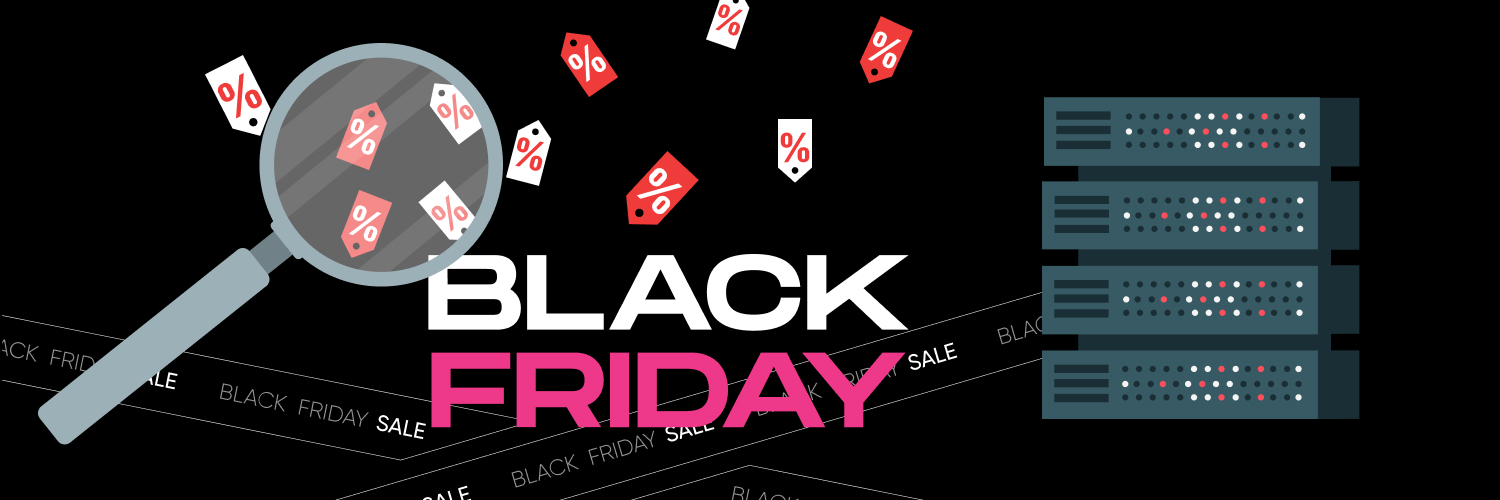Retailer Monitoring 101: A Detailed Guide On Retailer Price Monitoring
The eCommerce sphere is bigger than ever today. Large companies sell their products through multiple affiliate partners, third-party marketplaces, and online vendors to reach more customers. Customers were once tied to a single retailer. Now, they can find the same product at different retailers and third-party websites online. But as a brand, how can you ensure that the retailers you work with accurately represent your brand?
That’s where retailer monitoring comes in. You can use retailer monitoring to make sure third-party retailers are correctly displaying your products along with their descriptions and prices.
Below, you’ll see an overview of retailer monitoring, the challenges in this regard, and how brands can monitor their retailers effectively. Feel free to use the table of contents to skip sections as needed.
What Is Retailer Monitoring?

Retailer monitoring is the act of monitoring the retailers that stock your products. In a brick-and-mortar store, you have more control over the kind of customer experience you offer. But when you take your business online, ensuring the same consistency is not the easiest, especially when working with different retailers.
Each product page on the retailer’s website provides a touchpoint for your customers. It indicates how customers interact with your brand, and you have to make sure these touchpoints are the same across all retailers who stock your product.
Ready To Get Started?
Localized results and an ability to gather vast insights – start your data journey with our proxies.

Why is retailer monitoring important?
Your topmost priority must be improving the customer experience in online retail stores. The eCommerce space is highly competitive. If you want to stand out and establish a solid customer base, you must know your consumers’ preferences and buying patterns.
Retailer monitoring allows brands to learn which customers are essential to their company. It also lets you ensure that all your retail partners represent your brand the way you want them to.
Challenges of Third-Party Retailer Proliferation

When you sell your product through third-party marketplaces or retailers, you lose some degree of control over consistency. Here are some things that may not be consistent once you partner with other retailers.
- Pricing: What if a retailer company sells your product at a higher price? It could drive customers away from your products. Likewise, if they are selling your product at a lower price, customers may be more inclined to buy from them rather than your actual website.
- Brand Assets: You also want to ensure that the partner retailer brand maintains your brand’s assets, such as your branding components. These include everything from logos to packaging quality. For instance, your brand may be known for recyclable packaging. If a third-party marketplace doesn’t use recyclable packaging when shipping, customers may associate it directly with your brand and disbelieve your claims.
- Social Media Content: Brands also lose control over consistency in the kind of social media content published by their third-party marketplaces. They’ll have their own strategies, layouts, and campaigns.
- Item Listings: When a third-party marketplace or partner retailer lists your items on their websites, you want to make sure they display the right product images and enter the correct item descriptions.
What Do Brands Need To Monitor?

Here are the things brands need to monitor on their retailer partners’ websites or online marketplaces:
Category and search pages
Category pages are very competitive. Every brand wants to be at the top for highly-searched keywords because they want their product to be the first potential customers see.
If you want your brand to be in the top position, you need to keep tabs on your category pages. Where is your place in the search engine results? What percentage of clicks go to category pages for your products? Do you get the clicks from sponsored or organic keywords?
Reviews
When people are shopping online, they tend to read the reviews of previous customers. They want to know if existing customers are satisfied with the product or service they got from your brand.
You want to ensure you have 10 to 20 reviews on every product page of your retail partner’s site. If you have any less, you can use Amazon, Vine and similar programs to send product samples to your customers and request reviews in return.
Pricing
Another vital thing to monitor is product pricing. You want to make sure your product prices are uniform across all retail partners or third-party marketplaces.
Retailer price monitoring also lets brands see if a retailer has overpriced products on its website. You can then choose to remove your product from the retailer’s website or take appropriate measures to ensure your customers get the most competitive pricing from all third-party sellers.
Components of Retailer Monitoring

To maintain their reputation and standing in their respective industries, companies must monitor the following:
Third-party vendors
Companies use a Stock Keeping Unit (SKU) to keep track of their merchandise’s movement. Some common attributes that SKU can track are:
- Size
- Color
- Material
- Manufacturer
When you have thousands of vendors selling your items on their marketplaces or websites, you must track the product SKUs. Doing so allows you to get real-time insights from the vendor, new collection ideas, and buyer geolocation.
Your website
Retailer monitoring also entails monitoring your own website. Consumer opinions are compelling because of social proof. If you want to thrive in your niche, you must understand what drives consumer emotion and opinion.
Sentiment analysis incorporates image analytics, customer experience analytics, social monitoring, social listening, and more. Together, you can use this information to determine if people are talking about your brand or product.
Are the conversations surrounding your company positive or negative? How many times have people mentioned or talked about your brand online? Knowing all this is vital if you want to get a deeper insight into what’s going on in your consumers’ minds.
Competitor monitoring
Monitoring your competitors is just as important as monitoring your own website or that of your partner retailers. It allows you to keep up with your competition and ensure your strategies follow the industry’s current norm.
Some benefits of competitor monitoring include:
- Strategic improvement: Suppose your competition seems to be thriving in a certain area that you’re currently struggling in. Monitoring their strategies will give you an idea of how they manage to do it. You can learn to bridge those gaps in your strategy efficiently.
- Service provision: By monitoring your competition, you’ll know which services they’re not offering yet. You can provide those particular services to the consumers and thrive due to minimal competition.
- Lead generation: You can also find potential leads through eCommerce monitoring your competition. Suppose you notice that customers aren’t entirely satisfied with a particular competitor. It’s an excellent opportunity to swoop in and introduce them to your product or service.
- Threat identification: Competitors who have been in the industry for a long time may have already dealt with many threats and problems. By learning about their responses, you can prepare yourself for any issue you may face down the line.
How Can You Use Retailer Monitoring?

Retailer monitoring can provide companies with the information to improve their performance, customer experience, and revenue generation. Here are some ways you can leverage eCommerce monitoring:
Empower your brand’s identity
Customers don’t like inconsistent pricing. If your prices are different across all retailers and third-party marketplaces, you’ll have an unstable brand reputation. How do you tackle this?
You should monitor the prices across your retail partner brands and find the sweet spot that won’t turn off customers. If you go too far one way, you’ll miss out on a ton of profit. But if you go too far the other way, you’ll damage your price reputation. You must find a middle ground where your pockets and customers are happy.
Set unique triggers
Online retailers also set unique triggers that are alerted when their competitors take a certain action. For instance, you can set a trigger for when the competitor has started a sale or a new initiative, such as a celebrity collaboration.
With eCommerce competitor monitoring, you can determine how they increase sales or improve customer experience. Then, you can follow suit and maintain your competitiveness in the industry.
Get historical pricing trends
Historical pricing trends give you an insight into what customers are ready to pay and what may be too much for them. You can also use retailer price monitoring to understand competitor pricing patterns and trends for different times of the year or special occasions.
For example, what did your competitors change pricing during the last holiday season? Did they lower prices on certain products? Which products did they offer discounts on? You can use all this information to prepare yourself for a profitable holiday season this year.
Curate strategies and campaigns
Businesses can also use retailer price monitoring to get actionable insights that aid scenario planning. For instance, you could look at the times of the year your competitors are most likely to launch new products. When do they offer sales? What’s the extent of the discounts they provide?
Rather than predicting the future, it’s best to base your campaigns and strategies on data from your competitors.
How To Monitor Retailers

Now that you know why retailer monitoring is essential, it’s time you learn how to monitor everything from prices to category pages. There are a number of eCommerce data scraping services available, ranging from ‘launch and go’ API to fully custom solutions built on proxies – it all depends on what you need!
Proxies for eCommerce monitoring
Whether you’re collecting information from your competitors or retail partners, you’re gathering this data from a website that’s not yours, even if it sells your products.
When a human user searches for a website, the request goes to the webserver of the target website, but it’s almost impossible to manually keep track of all your vendors and thousands of category pages on their websites.
Even if you send multiple requests a day, it will take you months to gather information from all your vendors. In the meantime, the information you collected three months ago may have changed. What’s the alternative? Proxies.
Proxies are third-party servers that let you route your request via them, using their IP address to access a website. In this way, when you request to enter a website, the webserver does not see your IP address. Instead, they see the IP address of the proxy server. You can scrape the web with more security, privacy, and ease.
Why use a proxy?
Here are some benefits of using a proxy:
- A proxy server lets you access websites with more reliability, limiting your risk of getting blocked or banned.
- You can request access to a website from a different geographical location. Sometimes, websites have geographical restrictions, and people from other parts of the world can’t access them. But what if you want to monitor the pricing of your Asian or European partner retailers? You may also want to monitor your competitors in other parts of the world. Proxies let you access their websites easily.
- If you use a proxy pool, you will have many proxies so that you can submit a higher volume of requests to websites without being blocked or banned.
Types of proxies
Depending on your needs and budget, you can use different types of proxies for retailer monitoring. Residential proxies are the most commonly used type of proxies because they’re highly reliable and less likely to be banned compared to other types.
A residential proxy shows the IP address of an actual residential address. The webserver of your target website will see the request as if it is coming from someone living in a residential area. Since retailers don’t want to lose their customers, there’s a lower chance of residential proxies getting banned or blocked.
Rayobyte residential proxies give you access to a large IP Pool for unlimited retailer monitoring. You can also avoid CAPTCHAs and enjoy undisturbed eCommerce monitoring.
Another common type of proxies is data center proxies. These are at a higher risk of getting blocked than residential proxies, but they’re extremely fast. Plus, they’re more affordable, allowing you to monitor more retailers and competitors at a lower price.
Rayobyte data center proxies let you monitor retailers and competitors from more than 26 countries using over 300,000 IPs. With 25 petabytes per month, you won’t have to worry about speed when it comes to eCommerce monitoring.
Using an eCommerce price monitoring tool
When you use proxies for retailer monitoring, you have to manage them. Additionally, proxy rotation is important to prevent bans and blocks. So what if you don’t want to use proxies? What can you do to lessen your hassle? Use an automated tool like Rayobyte’s Web Scraping API.
Rayobyte’s Web Scraping API scrapes the web for you, getting real-time data from your partner retailers, competitors, and third-party marketplaces. You can collect all kinds of data, including but not limited to:
- SERP Ranking: Where do you rank on popular search engines’ results? Are you even on the first page? Where do your competitors rank? Rayobyte’s Web Scraping API will scrape the entire web to find this information for you. Since search engines tend to strike at any time, the SERPs may fluctuate without warning. Regular SEO monitoring will keep you ahead of your competition by alerting you of these changes instantly.
- Price Comparisons: You can also use the tool to scrape prices from your competitors’ websites. You use this information to adjust your prices, making them more competitive for the target consumers.
- Price Uniformity: To ensure pricing uniformity on your partnering retailers’ websites, you must scrape their sites. The data will indicate any nonuniformity in your products’ pricing across different retailers and third-party marketplaces.
- Social Media Monitoring: Social media has become a critical tool in marketing and advertising. By scraping data from your competitors’ social media pages, you can identify the strategies that seem to be doing well. Social media monitoring also allows lead generation as you can attract customers who are not happy with your competitors.
Ready To Get Started?
Localized results and an ability to gather vast insights – start your data journey with our proxies.

Final Words

All in all, retailer monitoring is instrumental in ensuring a positive customer experience and ensuring your company’s success. Besides your retail partners’ websites, you must also monitor customer sentiment on your own and your competitors’ websites.
Is a third-party retailer not showing accurate product images or descriptions? How are your competitors planning to change their pricing during certain times of the year? Are the customer reviews on your website and social media pages more positive or negative?
You can find the answers to all these questions through retailer price monitoring. It will also help you determine where there’s room for improvement. You can also develop strategies you can carry into the future due to their high potential for success and impressive historical performance.
The information contained within this article, including information posted by official staff, guest-submitted material, message board postings, or other third-party material is presented solely for the purposes of education and furtherance of the knowledge of the reader. All trademarks used in this publication are hereby acknowledged as the property of their respective owners.



